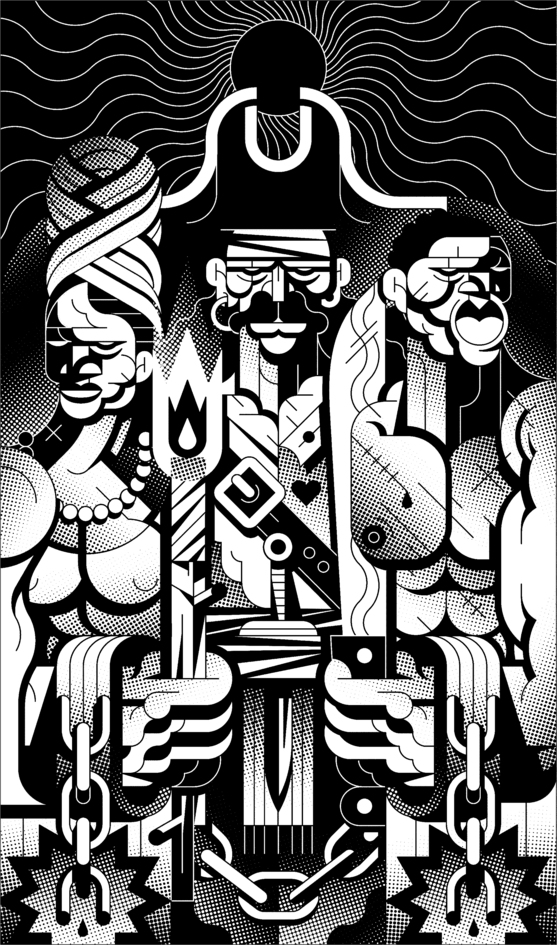
CHACO SOVEREIGN COMMUNITIES
PAR / BOL
REPÚBLICA DE CUNANÍ
BRA
DURANDÓ PHALANSTÈRE
ARG
ARTIST
KAEL
ABELLO


.
SAN LORENZO DE LOS NEGROS MEX
BRETHREN OF THE COAST CARIBBEAN
SAN BASILIO DE PALENQUE COL
Indigenous peoples were not the only ones who resisted ferociously against colonial powers in the continent. African slaves, brutally uprooted from their homelands, staged constant rebellions against a system that did not even recognize their humanity. On plenty of occasions, groups of slaves managed to escape and establish free territories, rescuing old customs and establishing new ones while also looking to free others. Afro-descendant peoples participated in independence struggles, even if independence did not mean the abolition of slavery. Nevertheless, this fighting spirit has lasted until the present.

.
CHACO SOVEREIGN COMMUNITIES PAR / BOL
REPUBLIC OF CUNANÍ BRA
DURANDÓ PHALANSTÈRE ARG
Latin American independence processes put an end to Spanish rule but did not deliver dignity and social justice for the majority. As a result, there were no shortage of efforts to challenge the new conservative or liberal republics with new emancipatory projects. Some were very local, like the Durandó Phalanstère, also known as Hughes Colony, in Argentina. It was a self-sustainable community founded by European immigrants in 1857. European influences got mixed with the aspirations of Amazon peoples in Amapá, northern Brazil, where the population challenged both France and Brazil to proclaim the independent Republic of Cunaní which lasted 15 years. In contrast, in the Chaco Boreal, presently shared between Paraguay and Bolivia, native communities held sovereign control over the territory until the 1920s. The area would be the stage for the so-called Chaco Wars between the two countries.

.
DUAL POWER IN DEMILITARIZED ZONES COL
GUNA YALA COMARCA PAN
SOLENTINAME NIC
The XX century in Latin America was one of struggles between self-determination and authoritarianism, inevitably backed by the United States. But the peoples did not lose sight of utopia and created self-government experiments. In Panama, the indigenous Guna people fought back against forced westernization, proclaiming the Republic of Tule in 1925. After days of tension, the indigenous peoples reached a settlement with the central government to create the Guna Yala Comarca, an autonomous territory with ancestral customs. In Nicaragua, amidst the fight against the Somoza dictatorship, poet and priest Ernesto Cardenal helped found an autonomous community in the Solentiname islands with peasants and fishermen. Further south, the Revolutionary Armed Forces of Colombia (FARC) managed to put their ideals into practice in the so-called “demilitarized zones.” However, the Colombian government torpedoed the fragile peace talks and the armed struggle was reignited.

.
SOCIALIST COMMUNES VEN
SETTLERS’ STRUGGLE MOVEMENT CHI
CARACOLES AND COUNCILS OF GOOD GOVERNMENT MEX
The struggles against neoliberalism paved the way for a wave of progressive and leftist governments in the hemisphere, but also to different self-government initiatives driven by popular movements. Whether they have state support, like Venezuelan communes, or are independent, like the Caracoles and Councils of Good Government in Mexico, all the experiments respond to territorial realities and build on centuries of historical struggles. Faced with endless obstacles and contradictions, these initiatives continue to develop new social relations in order to build a better world, one based on equality and social justice.







